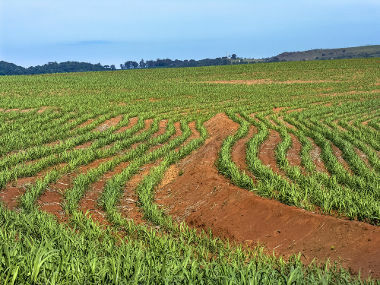O El Niño, a phenomenon of warming waters in the Pacific Ocean, has as one of its main consequences the decrease of fishing activity due to the reduction of nutrients responsible for attracting fish and other animals marine. In the case of Brazil, several transformations are verified in the rainfall regime, concentrating or dispersing its formation. In this article, the emphasis is on characterizing these aspects: the influence of the El Niño phenomenon on fishing activity and on the Brazilian territory.
How exactly does El Niño affect fisheries?
There is a strip in the ocean known as the thermocline, located between 50m and 200m deep, where there is a sudden drop in temperatures. Below this line there is a greater concentration of nutrients, essential for attracting schools. In tropical and equatorial areas, the thermocline is more evident, which makes the phenomenon of upwelling difficult, when the cold, nutrient-rich waters overtake the thermocline and reach areas closer to the surface oceanic.
In high-pressure subtropical regions, strong winds displace the heated surface water, which helps the waters more deep winds to carry nutrients to the surface areas, that is, strong winds contribute to the resurgence. El Niño heats the waters and reduces the speed of the winds, making upwelling difficult, which forces the most different marine species to migrate towards the colder regions or diving into deeper waters, which results in a decline in fishing activity and displacement of species of mammals, birds, among others.
What are the impacts of El Niño for Brazil?
In Brazil, several situations occur due to the size of the Brazilian territory. In summary, in the El Niño years there is an increase in the concentration of rainfall in the southern region and an increase in drought in the Amazon eastern and northeast thanks to the weakening of the subtropical trade winds that normally help to distribute the moisture. In the south, the subtropical region closest to the trade formation, the humidity remains. In the North and Northeast, there is a lack of humidity and, consequently, rainfall decreases.
Do not stop now... There's more after the advertising ;)
Another component that alters the rain cycle in eastern and northeastern Amazonia is related to atmospheric circulation. With the greatest warming in the Eastern Pacific, a low-pressure center forms. The rise of warm, humid air causes rains on the coasts of Peru and Ecuador. After reaching higher altitudes, this air becomes cooler and drier, forming a zone of high pressure and subsidence. The descent of this cold dry air occurs exactly in the eastern portion of the Amazon, making it difficult for the formation of clouds and rain for this region and for the Northeast.
In the South and Southeast, the winter months have milder temperatures when El Niño develops. In this case, El Niño offers possibilities for more profitable harvests, as increased rainfall and less intense winters contribute to agriculture. In the Amazon, rivers lose their volume of water, which harms riverside communities and local fauna. The drier climate also increases the chances of forest fires, posing even more risks to the Amazon ecosystem. In the Northeast, the reduction in rainfall causes damage to several areas, but the Sertão Nordestino is certainly the location most affected by the most pronounced dry season.
Julio César Lázaro da Silva
Brazil School Collaborator
Graduated in Geography from Universidade Estadual Paulista - UNESP
Master in Human Geography from Universidade Estadual Paulista - UNESP
Would you like to reference this text in a school or academic work? Look:
SILVA, Julius César Lázaro da. "Influence of El Niño in Brazil and on fishing activity"; Brazil School. Available in: https://brasilescola.uol.com.br/geografia/influencia-el-nino-no-brasil-na-atividade-pesqueira.htm. Accessed on June 28, 2021.



